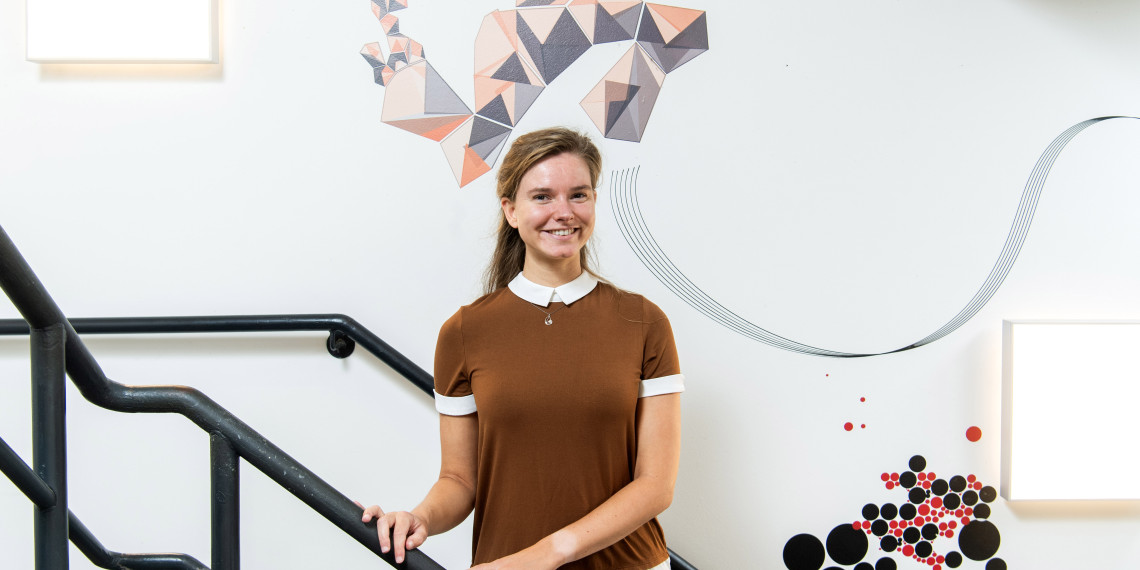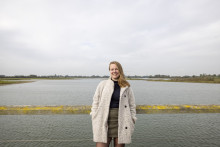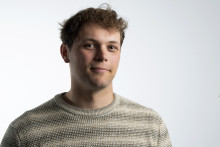‘Mathematics is very relevant, and it can make a real contribution to the world,’ says PhD candidate Maike de Jongh. And her research is a nice example of that. Although her work could be seen as rather abstract, the mathematical models she works with can lead to many practical applications, including prevention of forest fires and a better treatment of cancer.
About Maike de jongh
PhD research topic: Sequential decision theory for interacting Markov processes
Work: PhD candidate at the Stochastic Operations Research group, Faculty of Electrical Engineering, Mathematics and Computer Science (EEMCS) at the University of Twente
Education: Master's degree in Applied Mathematics, University of Twente
Originally from: Hengelo, the Netherlands
Model behaviour
De Jongh’s research focuses on spatially interacting Markov processes. In simpler terms, she studies mathematical models and systems consisting of multiple particles. As she explains, every one of these particles has a different behaviour that evolves over time, and all neighbouring particles interact with one another. The particles can react to and mimic the behaviour of their neighbours, which may lead to the spread of certain types of behaviour in the entire system.
‘To give a practical example, such a model can describe opinion dynamics and the evolution of social choices,’ says De Jongh. ‘This is often used in explaining voters’ behaviour, because people are influenced by opinions of people in their social circle. Similar models are used to describe natural phenomena, such as earthquakes, the spread of wildfires, epidemics and so on. Interacting Markov processes usually follow simple rules, but they are complicated to analyse and can be applied to a large variety of topics. The fact that these models are so universal is really beautiful to me.’
‘The fact that these models are so universal is really beautiful to me’
The PhD candidate develops methods for the control of these models, so that they can be applied for decision making. ‘I develop methods to control the models’ dynamics and drive them toward desirable behaviours. This is something that has hardly been explored yet and what I want to bring to the table,’ she says.
Ultimately, De Jongh would like to develop a general decision theory that can be used for different types of interacting Markov processes and various applications. ‘This might be too ambitious, though, because each model has its own intricacies,’ she says. ‘But I would like to at least make a step in this direction.’

Setting fires
The young researcher is currently working with the so-called Abelian sandpile model, which has been used, among other things, to describe the spread of forest fires. ‘Large forest fires can have devastating consequences. They can lead to loss of lives, property and natural resources, so it’s desirable to prevent such catastrophic fires,’ says De Jongh. ‘However, fires on a small scale can actually be very healthy for nature. They clear out overgrown areas of heavy brush and allow room for new plants to grow, and so they can lead to an increase in biodiversity and even prevent larger fires.’
It could therefore be useful to periodically set up small fires, adds De Jongh. ‘Using the model, I try to find the optimal frequency and locations to start small fires. These insights could be used to determine exactly when and where to set a controlled fire.’
In the future, the PhD candidate would like to use similar models to enhance cancer treatment. ‘Interacting Markov processes have been used to model cancer, as interactions between cells play a large role in the evolution of a tumour,’ she says. ‘This could then help clinicians to decide when and where exactly it’d be best to apply medical therapy, such as chemotherapy.’
The reality of math
Even though she won’t be the one directly applying the mathematical models in practice, Maike de Jongh is happy to know that her work can make a difference in people's lives. ‘I like solving puzzles and I enjoy working on the mathematical models, on the abstract problems, but I also like that they all relate to different practical applications. It’s fulfilling to know that I can contribute to the world, not just do math for math’s sake.’
‘It’s fulfilling to know that I can contribute to the world’
Doing math, however, is more interesting than many people think, adds the PhD researcher. ‘People often believe that doing a PhD in math is a very lonely endeavour. They probably picture me sitting at a desk doing math all day, but it is not like that. There are a lot of opportunities to interact and exchange ideas with your direct colleagues as well as experts around the world. PhD in math is way more exciting than just sitting at a table by yourself.’
One of the beautiful aspects of mathematics, according to De Jongh, is its universality. ‘Math is very broad. It is applied almost everywhere.’ This is particularly true for the models she works with. ‘It’s amazing to think that similar types of models can explain complex phenomena such as the spread of wildfires, the functioning of the brain, the evolution of tumours, the occurrence of earthquakes and more. The universality of the Interacting Markov processes is magical.’








